Ruffed grouse, scientific name Bonasa Umbellus, sometimes locally known as partridge, pats, or in more southern climes mountain partridge. No matter what you call it there is a special connection with the ruffed grouse and upland hunters.
It’s a bird of long traditions through writings of people like George Bird Evans and artwork of William Harden Foster. But you have to experience the flush of one to understand that connection and understand why it is called The King of Gamebirds. If you want to hunt the bird solo or get a invitation from a friend to go hunting, here is some information to help you get started.
They are not just anywhere: grouse range, habitat, & seasons
Although the ruffed grouse is the most widely distributed gamebird in North America you can’t just find them anywhere. You will find grouse all the way from Alaska to the northern mountains of Georgia. Their distribution is lighter the further south you get in the range.
They have specific habitat requirements that limit their numbers within that distribution. Unlike their brethren quail and pheasant that prefer grain fields and their edges, grouse are birds of the forests. They like thick forest growth provided by timber regeneration and along forest edges and openings. When the landscape changes grouse will move.
Birds that were in a specific place last year will be non-existent the following year.
Another uniqueness of the ruffed grouse that adds to their appeal: unlike other popular gamebirds like quail and pheasant, grouse cannot be raised in captivity and released for hunting. Every grouse flush you experience is a wild bird.
Don’t let anyone tell you different.
That unique factor has given him the nickname “King of Gamebirds”. The Ruffed Grouse Society is a conservation group that supports habitat management for ruffed grouse and you can find more information about ruffed grouse at their website.
Seasons and bag limits also vary by state. In their more northern regions grouse seasons usually start in mid-September and many states have a liberal daily bag limit of 5 birds. As you move further south the season moves back to mid-to late October and daily bag limits are usually smaller, 2 – 3 birds per day.
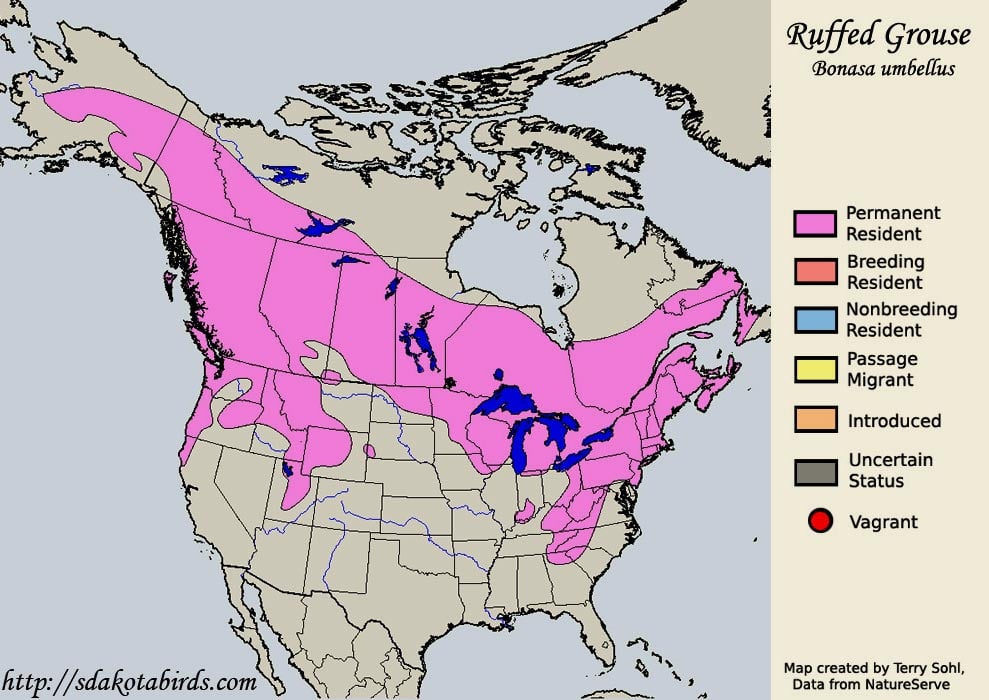
So how do I find grouse?
Like any other upland hunting, success is many times the result of the work you put in before going to the field. If you are fortunate to get an invitation to hunt with a friend you are in luck!
Most grouse hunters are protective of their particular hunting areas (covers) but are willing to share their knowledge of terrain, habitat, and hunting methods with a neophyte hunter. Use the occasion to soak up as much information as you can about each.
But what about the solo hunter who’s just getting started? Maybe a job change brought you to grouse country and you’ve got a bird dog itching to get out.
For the first time hunter your best opportunity may be on public land. Start by getting maps of the public land you your area to include county, state, and federal forests. First this will give you a good indication of access roads and trails within the area.
Next it gives you a sense of the terrain.
Many times those government agencies also have maps that indicate forest age classification. As stated earlier, grouse like early forest regeneration so if indicated on the map look for forests that is 10 – 20 years old.
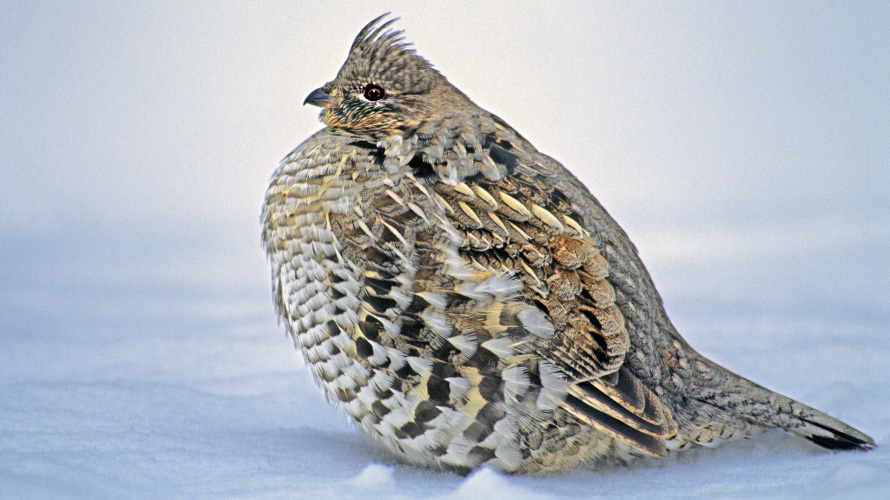
From looking at maps choose several areas that look promising with roads, trails, and young forests. Now it is time to put in some boot leather. Grab your maps and head for the woods! It’s also a good time to exercise the dog. Walk the trails and logging roads looking for that young forest growth.
So what does it look like?
There’s a popular saying among grouse hunters, “If you swing your gun and the barrels hit a tree you’re in grouse cover.”
Look for local food sources close by too. In the northern range that includes aspen buds and changes as you get further south to acorns and wild grapes.
Time to go hunting
The good news is like a lot of other upland birds you don’t need to be in the woods at daylight to get in on the action. Ruffed grouse are late risers and don’t like to come off the roost until the sun is well over the horizon and dew has started to melt. Once they start moving around putting down ground scent it also makes conditions better for your dog.
All you can do now is go back to those areas you scouted and start hunting. If you have a dog the best technique to cover ground is to walk the logging roads or trails and let your dog work the thick cover on either side. This will usually produced results. If not you are going to need to bust some brush. Get off the trails and target likely cover.
Grouses cover needs change throughout the day. Don’t be afraid to try something unorthodox.
Grouse are where they want to be, not where we expect them to be. Be sure to make mental notes of what type of cover you find them in during certain times of the day. It may pay off for future hunts.
For the dogless hunter, things may be a little tougher. Walking trails and logging roads slowly, pausing every few steps, may make a bird nervous enough to flush from its hide. If you don’t get success doing this it is time to get back in the thick stuff. Get into the young forest growth and walk with deliberation.
Most hunters get their success by walking slowly in a zigzag pattern. Take five steps slowly and pause. Then slightly change directions and repeat. Be prepared at any time for a flush. Grouse will normally take to the air late in the pause or when you take that first step.
Now something about grouse behavior. Unlike their cousin the bobwhite quail which rely on strength in numbers through the covey and may hold for a pointing dog or sit tight when threatened, grouse are usually found one at a time. Their primary self-defense mechanism is to run from a perceived threat. If you are hunting with a dog don’t expect the bird to be right in front of the dogs nose.
Or if you are a lone hunter the grouse will probably not flush under foot. Always be looking ahead of the dog or out to your front. Sometimes the bird will run far enough you’ll hear a flush but never see the bird.
Grouse are hard to hit on the wing for one reason. Most hunters want to see the entire bird before pulling the trigger.
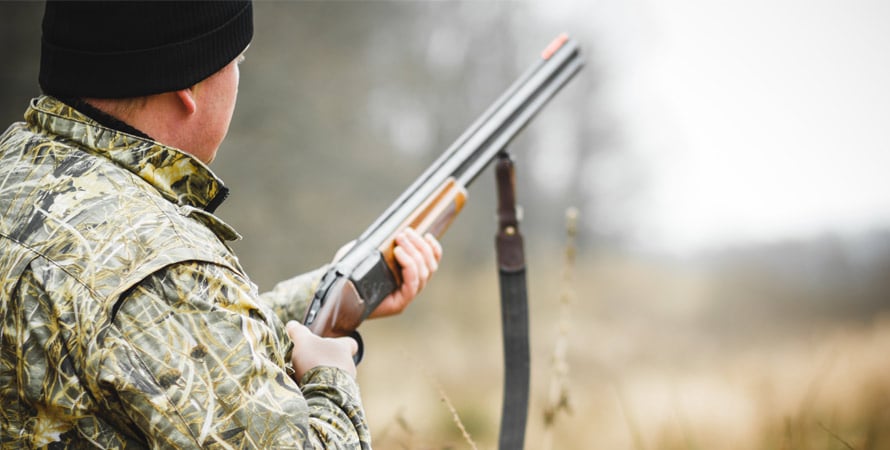
That may never happen.
This is instinctive shooting in its simplest form. When you hear the wingbeat of a bird rising off the ground your gun should be coming to your shoulder and body turning in the direction of the sound. As soon as you see part of the bird in the cover mount the gun and pull the trigger.
It happens that fast.
There is a reason avid grouse hunters count the numbers of birds flushed and not number in the bag.
What gun should i use for grouse hunting?
The short answer is one that you shoot well. But there are some considerations that should improve your success. Consider what we’ve already discussed: terrain and habitat.
First you will be doing a lot of walking in search of grouse. So light weight is a primary consideration.
Second is it the thick forest growth the grouse call home. A short barreled gun is needed to not hang up when moving through thick brush and when swinging your gun on a flushing bird.
That is why most grouse hunters chose either side by side or over/under shotguns for their hunting. Years of experience have led them to that conclusion so trust their judgment.
Yes, there are lightweight short barrel semi-auto and pump shotguns out there. And some grouse hunters prefer them for the comfort of that third shot.
The receiver length on them does give you a slight disadvantage when it comes to length. When you are working your way through an aspen or oak thicket that slight length difference may be important.
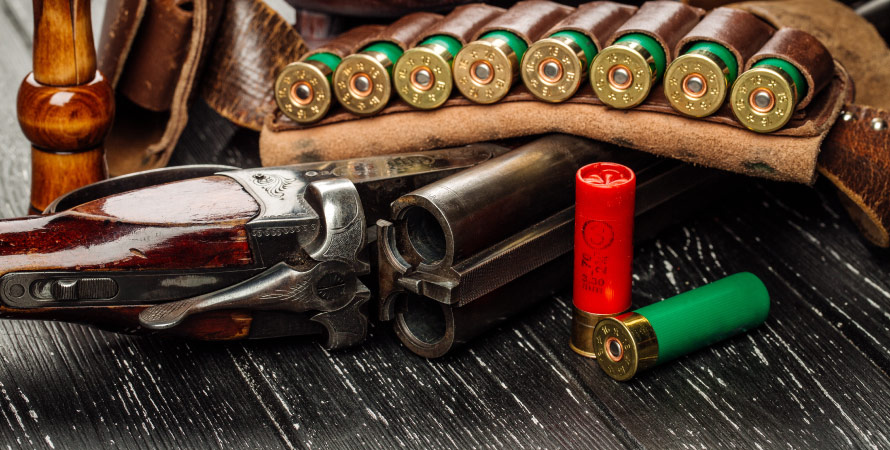
When it comes to gauge selection again it is a matter of preference. Many times light weight and short barrels translate into a smaller gauge like the 20 or 28. They will both serve you well as a grouse gun and many hunters prefer them.
You’ve probably already gathered given the habitat that shots at grouse are typically at close range, maybe 20 – 25 yards. So the reduced load size in either is not a disadvantage.
At the other end of the scale, if you want to add a little weight, the 12 gauge will offer that little bit extra shot that might mean the difference in putting a bird on the ground. Recoil is not an issue.
You will not be shooting that much at grouse.
Is there a preferred load for grouse hunting?
Again this comes down to personal preference. Most avid grouse hunters prefer high quality loads that give consistent shot patterns. Here’s why. Unlike quail and pheasant hunting where you are shooting in open terrain, grouse shots are in thick cover.
You will be shooting through brush and tree branches. In fact, if you wait until you get a clear shot at a grouse you probably won’t get a shot. Expect to take that shot when you only see part of the bird and let the shot load do its work.
B&P Upland Loads provide all the medicine you need to put a grouse in the bag.
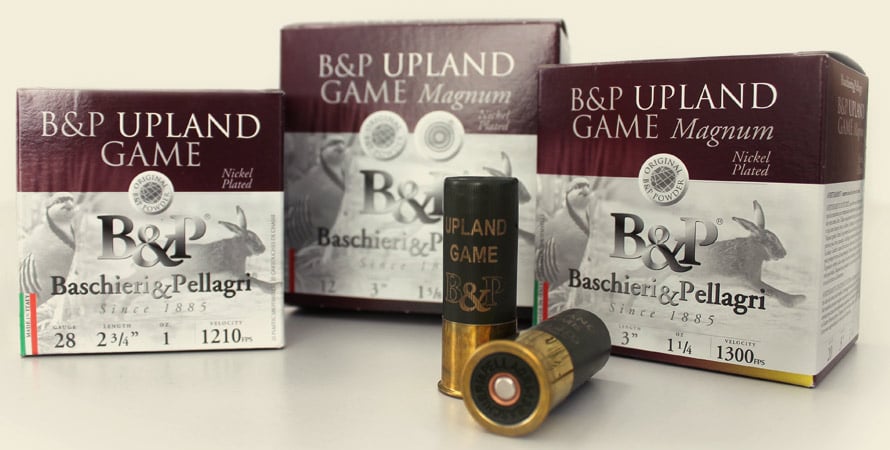
The nickel plated lead shot will maintain its shape, help penetrate brush, and get the shot on target. The loads are available in 12, 20, and 28 gauge in several shot sizes. Most grouse hunters prefer 6 or 7 ½ shot. If shooting a two barrel gun, some use 7 ½ in the first barrel with 6s in the second. Early in the season when birds may flush a little closer and cover is thicker your best choice may be 7 ½ all around.
And then there are the dogs
Many lifelong grouse hunters will tell you they wouldn’t do it without the dogs. They will definitely increase your number of bird contacts compared to the solo hunter. It’s hard to argue with that. Many a novice hunter has been enthralled by the sight of a setter on point in an aspen thicket with the roaring flush of a grouse, followed by the bark of the shotgun, and a retrieve to hand.
Sit around the fire at a grouse camp and arguments will start over which breed is best for grouse hunting. Again, personal preference and your style of hunting are important factors if you don’t already have a dog. Your choices come down to either pointing or flushing breeds.
Pointing breeds are the classic grouse dogs and without doubt dominate the grouse woods. A well trained pointer will locate the birds, point from an appropriate distance allowing the hunter to walk in and flush the game, and then retrieve to hand.
There is a good page on Project Uplands website that can help select the breed that is best for you. Don’t discount the flushing breeds. Many grouse hunters also hunt pheasant or waterfowl and already share the outdoors with a Labrador retriever or Spaniel.
Again, your lifestyle and hunting style are important factors in selecting the right dog for you.
Whether pointer or flusher there is one important factor to consider, grouse dogs are typically close ranging. They don’t get very far from the hunter.
Bring an English Pointer used to quail on open fields to the grouse woods and you can expect problems.
A dog that get much out of eyesight our ear sound might point a bird but in all likelihood that bird may flush before the hunter arrives. Talk to other hunters with dogs, or better yet go on a hunt with them, and get a sense for a dogs natural range in grouse cover. It is much closer than you would expect from most pointing breeds.
Gear to get started
If you are already an upland hunter chasing quail or pheasant you already had most of the gear to get started. For the neophyte making choices on clothing, boots, and vest are nearly as important as the gun you use.
Let’s start with brush pants. Don’t get stingy. Buy the best you can afford. Even if you are walking roads and trails you will be getting into thick brush to follow dogs and flush birds.
A good pair of pants will make the going easier. Canvas pants with some kind of cloth facing seem to be the favorite. Many outdoor retailers like Orvis sell them.
Your next choice is a shirt.
Again, consider thick cotton cloth with double cloth sleeves. You will be using your arms to push through brush and it helps protect them. Depending on your next choice, a vest, consider getting an upland shirt with blaze orange on the shoulders. This will make you easily visible when with other hunters.
Again there are many offerings out there for upland vest. Think about what you need to carry and the weather you will be hunting in. A game pouch and pockets with shell holders are a minimum.
With a dog you will need to carry a water bottle. Maybe some emergency supplies in another pocket. When hunting in warm weather a strap or open mesh vest will help stay cool. A full vest or even jacket will serve you well during wet or cold weather.
If you want to ruin your grouse hunt buy a cheap pair of boots.
There are several critical factors to consider in choosing the right boot other than just size. Boot tread is very important. Grouse hunters typically traverse several types of terrain.
Boot that provide good traction provide that. Also consider ankle support.
That thick brush may be littered with dead tree branches and the occasional unseen rotten stump hole. Good ankle support will make walking easier.
Don’t forget waterproof.
Most good grouse habitat is close to a water source like small streams or maybe a bog area. Waterproof boots will keep your feet dry all day.
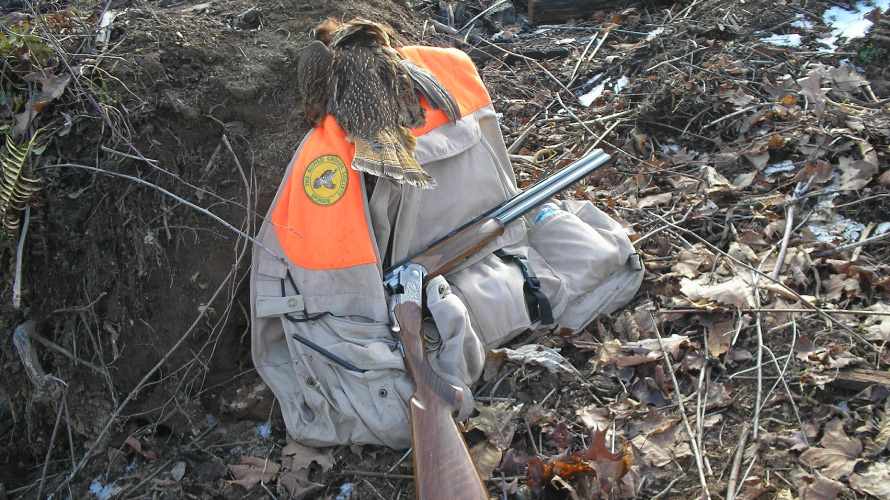
Smaller items that may prove important are a blaze orange hat for safety and gunning gloves to protect your hands from cuts while moving through thick brush.
Don’t forget the safety glasses to protect your eyes from tree branches when busting brush.
Most hunters prefer either clear or yellow lenses since you are usually shooting in low light conditions.
One other thing that may prove valuable is a hand held GPS unit. It is easy to get temporarily disoriented in the grouse woods.
Get off the trail to follow a dog tracing the track of a running grouse, lose sight of your landmarks, and you are left standing wondering which direction to go.
The GPS can always provide you a point of reference either through selected waypoints or if nothing else a direction back to your vehicle. As a bare minimum you should have a magnetic compass on you to give you cardinal directions to head to the nearest road or trail.
Safety In The Field
Just as in any hunting situation emergencies are possible and you can’t carry enough equipment to handle every possible emergency.
There are small lightweight First Aid kits that may fit comfortably in your vest. Think about other lightweight items that might prove useful: a butane lighter to start a fire; a silver space blanket that can keep you warm and also is visible from the air; a pair of boot laces to be used to rig a temporary shelter.
Of course a knife is an essential on any hunting trip and always proves useful.
Blaze orange is not only required in most states but also an essential safety items in the grouse woods, particularly when with other hunters. You can easily be 20 yards from another hunter and not see them. When grouse flush wild you must know without doubt where the other hunter is.
So there we have it. The air is turning crisp. The leaves are turning golden yellow or brilliant red and that hunting urge strikes. Do your preparation and you will have a wonderful time in the grouse woods. And after that first thunderous flush you will understand why he his call the “King of Gamebirds”.

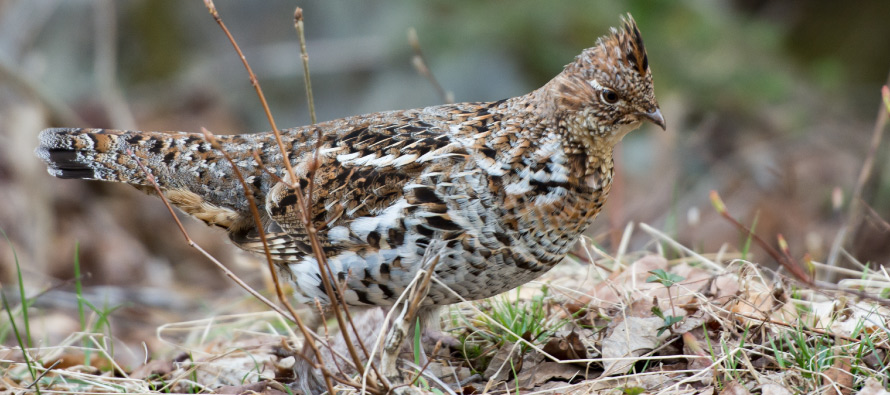

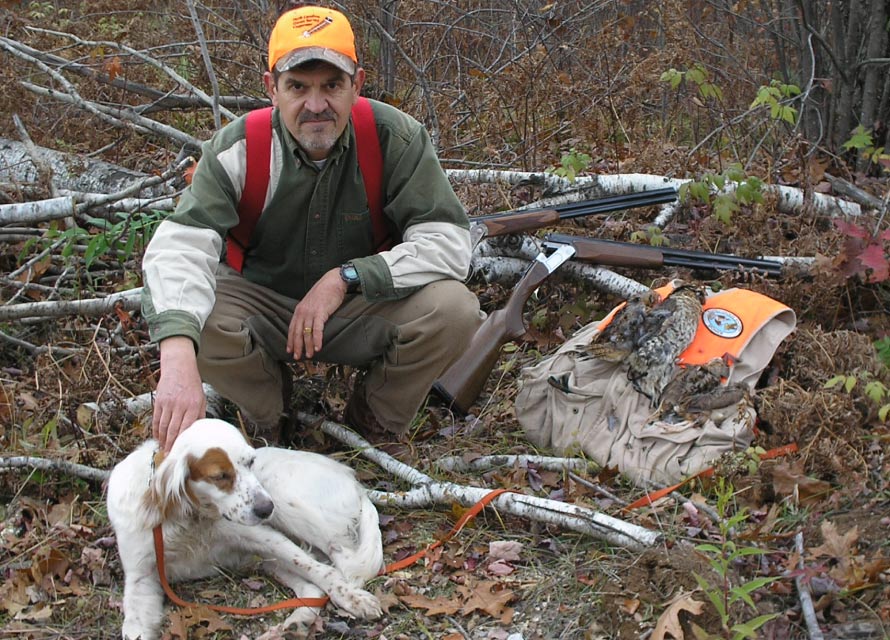

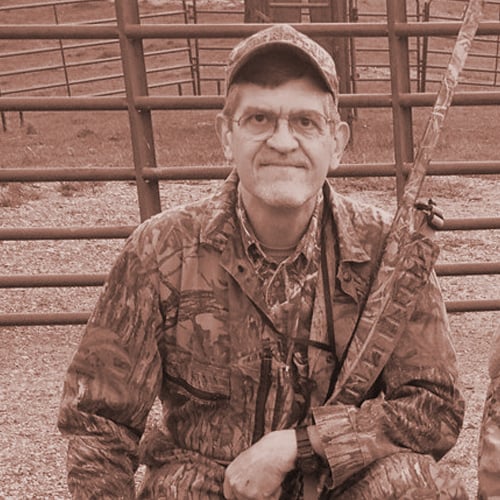
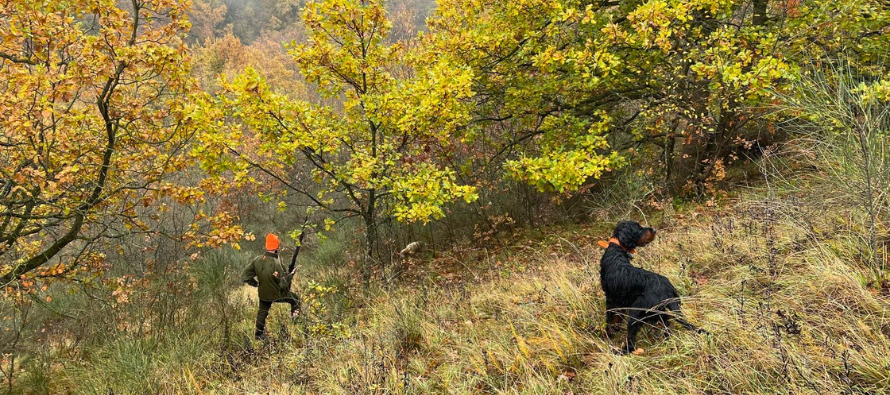
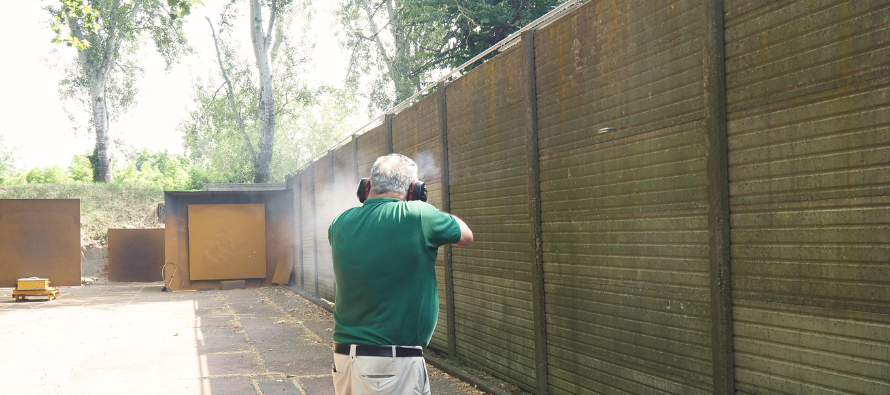
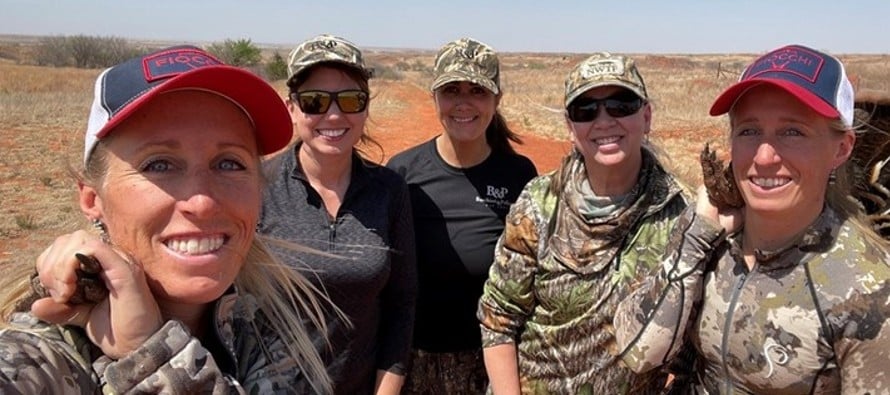
Comment this post